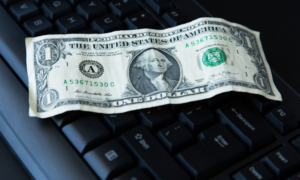Ten RRSP questions answered
How much should you have in your account?
Advertisement
Advertisement
By MoneySense Staff on February 13, 2017
By MoneySense Staff on February 13, 2017
How much should you have in your account?
Advertisement
Share this article Share on Facebook Share on Twitter Share on Linkedin Share on Reddit Share on Email
Advertisement

Whether you’re heading out of town for the weekend or a round-the-world trip, protect your property with these tips.

Whether you want the highest interest rate or no service fees, these savings accounts will meet your needs.

Find the best GIC rates in Canada. Plus, everything you need to know about how they work.

What Canadians need to know about stablecoins, possible coins from Amazon and Walmart, and Canada launches three XRP ETFs.

RBC Direct Investing has introduced commission-free trades on 50 exchange-traded funds (ETFs) from partner iShares.

Which ETFs should you invest in? Which ones best suit your risk tolerance? What about personal ethics? Check out...

The latest earnings reports for Canadian investors from the cybersecurity and convenience-store giants.

Canada was ranked the fifth-most investment-curious country in a recent study, with higher-risk investments like stocks and crypto leading...

A MoneySense reader asks about survivor benefits for spouses. Here’s how defined benefit and CPP survivor payments work in...

The tax-free savings account is a great wealth-building tool, but it’s sadly misunderstood. Here are seven TFSA features Canadians...
Advertisement
Hi,
If there’s a room of 100000 in an RRSP, can we contribute all in a year? Or we can only deposit a maximum of 26000 only. THanks.
If you mean that you have a $100,000 of unused RRSP contribution room, then the answer is no you are not limited to putting in the yearly maximum. You could put in the full amount depending on your income, but beware of the AMT tax rules.
On the other hand, you may want to spread the unused room over more than one year so the tax rate of savings (tax rebate) on the income you are getting the deduction for is at the higher rates of tax.
By way of example if your income was 150k+, you may not want to take 100k of deductions all in one year. Instead, spreading it out over two or three years may allow you to save taxes at 53% or 43% instead of 31% or lower tax table rates. The difference in planning and being patient is you could easily save over $20,000 in taxes.
Generally speaking, if you are working with a CFP, CPA or R.F.P. it pays to get professional advice, as the ideas can be far greater than the cost.
Good luck!
Can I buy RRSPs March 1, 2021 using my room from 2020 income and apply when completing my 2020 return?
Thanks for the question. We invite you to email your question to [email protected], where it will be considered for a future response by one of our expert columnists. For personal advice, we suggest consulting with your financial institution or a qualified advisor.